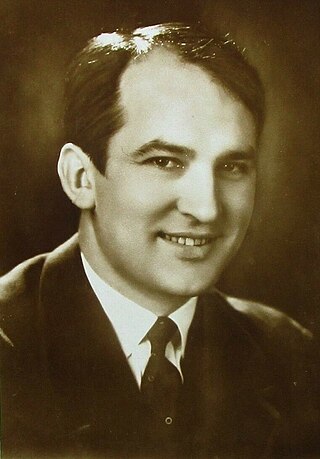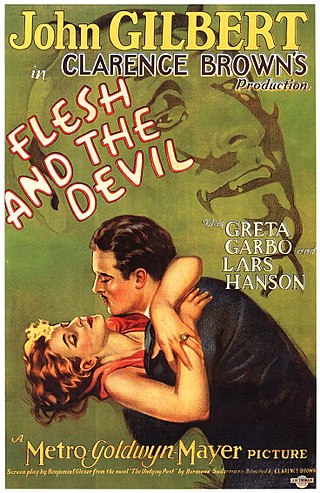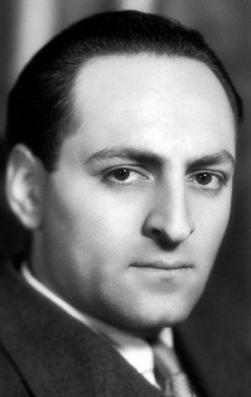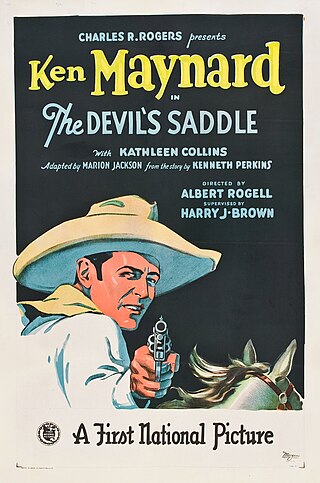Related Research Articles

The Academy Award for Best Cinematography is an Academy Award awarded each year to a cinematographer for work on one particular motion picture.

Sunrise: A Song of Two Humans is a 1927 American synchronized sound romantic drama directed by German director F. W. Murnau and starring George O'Brien, Janet Gaynor, and Margaret Livingston. While the film has no audible dialog, it was released with a synchronized musical score with sound effects using the Movietone sound-on-film process. The story was adapted by Carl Mayer from the short story "The Excursion to Tilsit", from the 1917 collection with the same title by Hermann Sudermann.

The General is a 1926 American silent slapstick Western action comedy film released by United Artists. It was inspired by the Great Locomotive Chase, a true story of an event that occurred during the American Civil War. The story was adapted from the 1889 memoir The Great Locomotive Chase by William Pittenger. The film stars Buster Keaton, who also co-directed it along with Clyde Bruckman.

The Devils is a 1971 historical drama horror film written, produced and directed by Ken Russell, and starring Vanessa Redgrave and Oliver Reed. A dramatised historical account of the fall of Urbain Grandier, a 17th-century Roman Catholic priest accused of witchcraft after the possessions in Loudun, France, the plot also focuses on Sister Jeanne des Anges, a sexually repressed nun who incites the accusations.

William Dieterle was a German-born actor and film director who emigrated to the United States in 1930 to leave a worsening political situation. He worked in Hollywood primarily as a director for much of his career, becoming a United States citizen in 1937. He moved back to Germany in the late 1950s.
Benjamin F. Glazer was a screenwriter, producer, Foley artist, and director of American films from the 1920s through the 1950s. He made the first translation of author / playwright Ferenc Molnár's play Liliom (1909) into English from its original Hungarian (Magyar) in 1921. His translation was used in the first American live stage play performance that year and later in the subsequent 1930 film version, and in every production in English of the play for the 115 years since its 1909 writing until recently. It also served as the basis for the libretto for Rodgers and Hammerstein's Carousel, as well as for Phoebe and Henry Ephron's screenplay for the 1956 film version.

Flesh and the Devil is an American silent romantic drama film released in 1926 by Metro-Goldwyn-Mayer and stars Greta Garbo, John Gilbert, Lars Hanson, and Barbara Kent, directed by Clarence Brown, and based on the novel The Undying Past by Hermann Sudermann.

Charles Howard Crane was an American architect who was primarily active in Detroit, Michigan. His designs include Detroit's Fox Theatre and Olympia Stadium, as well as LeVeque Tower in Columbus, Ohio, which remains that city's second tallest building.

Conrad Albinus Nervig was an American film editor with 81 film credits.
The Devil Probably, also spelled The Devil, Probably is a 1977 French drama film by director Robert Bresson. It was entered into the 27th Berlin International Film Festival, where it won the Silver Bear - Special Jury Prize.

The Squall is a 1929 American pre-Code drama film directed by Alexander Korda and starring Myrna Loy, Richard Tucker, Alice Joyce and Loretta Young, and based on the 1926 play The Squall by Jean Bart.

Marion Gering was a Russian-born American stage producer and director. He moved to the United States in 1923 as an artist. He became involved in the theatrical community in Chicago, founding the Chicago Play Producing Company.

John W. Boyle, was an American cinematographer whose career spanned from the silent era through the 1950s. Over his career he would photograph more than 150 films, including features, shorts and documentaries. He would also work on several British films over the course of his career.
Louis Stevens was an American screenwriter of the silent and sound film eras. Born on Christmas Day 1896 in Riga, Governorate of Livonia, Russian Empire, Stevens entered the film industry in 1920 when he co-wrote the silent film A World of Folly, with Jane Grogan. In his over 30-year career he worked on over 40 screenplays, as well as several film shorts and two television series. Among his more notable films were: contributing to the script of the 1931 version of Dracula, starring Bela Lugosi; co-writing the story for What Price Hollywood? (1932); the screenplay for the 1940 western, Colorado, directed by Joseph Kane, and starring Roy Rogers; the story for Streets of Laredo (1949), starring William Holden, Macdonald Carey and William Bendix; 1951's The Cimarron Kid, starring Audie Murphy; and Horizons West (1952), starring Robert Ryan, Julie Adams, and Rock Hudson. Stevens' final screenplay was for Flaming Frontier in 1958, although he did some work on additional dialogue for the 1959 film, Desert Desperadoes. Stevens also wrote several television episodes, one for Cheyenne, and two for Hawkeye and the Last of the Mohicans, all in 1957.

John P. McCarthy, also known as J.P. McCarthy or simply as John McCarthy, was an American director and screenwriter of the 1920s through 1945. He began in the film industry in front of the camera, as an actor in silent films and film shorts during the 1910s, before moving behind the camera in 1920. He usually directed his own screenplays. Although he directed the occasional drama or comedy, his specialty was the Western, which make up 28 of his 38 filmography entries.

The Devil's Saddle is a 1927 American silent Western film directed by Albert S. Rogell and written by Marion Jackson. The film stars Ken Maynard, Kathleen Collins, Francis Ford, Will Walling, Earl Metcalfe and Paul Hurst. It is based on the story "The Devil's Saddle" by Kenneth Perkins published in Argosy, October 30-December 4, 1926. The film was released on July 10, 1927, by First National Pictures.

Kathleen Collins was an American film actress of the silent era. Her final film, however, Border Devils, is a sound film.
Fred Windemere was an American actor and film director of the silent era.

Charles A. Logue (1889–1938) was an American screenwriter and occasional film director active in the silent and early sound era.
Charles J. Hunt was an American film editor and director. He also worked at various times as an actor, production manager and associate producer.
References
- 1 2 3 4 5 The Devil's Masterpiece. American Film Institute. Retrieved June 22, 2021.